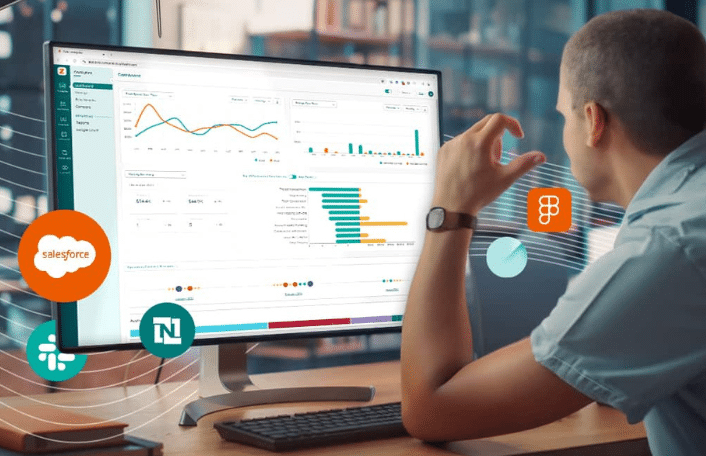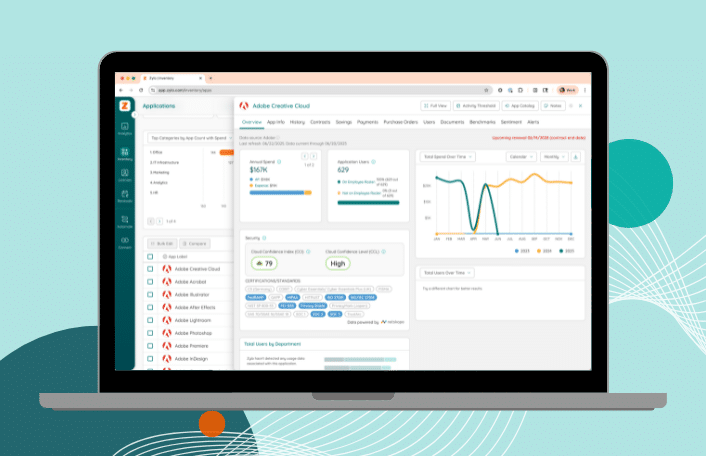
From Chaos to Control: Applying FinOps Thinking to SaaS
Table of Contents ToggleGartner Debuts SaaS Management Platform (SMP) CategoryHow To...
Back
Back
Search for Keywords...
Blog

05/20/2021
Table of Contents
SaaS is even more critical to your business than it was 18 months ago. And thus SaaS Management will be pivotal in 2021.
Prior to COVID-19, Gartner predicted that SaaS spending would grow by over 10% in 2020 and reported that nearly half of surveyed companies listed SaaS as a priority. And that was before the paradigm shift that caused plenty of companies to invest heavily in SaaS tools to support a remote workforce.
In short: the trials and tribulations of 2020 have underscored the reliance on the cloud and SaaS for business continuity.
Despite expectations of slowed sales and business, cloud and SaaS companies showed unexpected resiliency as more businesses deployed tools to enable remote work.
But not everything has gone smoothly in this shift. While many businesses spent lavishly on SaaS to “tool up” and provide workers with the tools needed to ensure business continuity (think Zoom, for example) those same tools have caused a major increase in unexpected costs.
A year ago, few knew what the long-term impacts of the global pandemic crisis would be. Today, more than 12 months later, a few things are clear:
Now, IT leaders will need to address how they adapt their SaaS stacks to support remote growth in the long term without giving in to unnecessary and increasing costs.
At the center of this conversation is the SaaS management platform software category.
In February 2021, Gartner released its first report for a newly identified category: SaaS Management Platforms, or SMPs.
“Managing SaaS applications with disparate admin controls decreases IT’s ability to track usage, automate management tasks and establish consistent security posture across the portfolio,” Gartner wrote in the report. “Scalable SaaS portfolio management requires I&O leaders to adopt SMP tools. The market for SMPs has matured, with core capabilities to discover SaaS applications, manage their use, automate workflows, and establish consistent identity, access and data governance controls across SaaS applications.”
In other words, SaaS Management is no longer solely about visibility and cost savings. With the right platform in place, IT leaders can more easily ensure the software that their teams are using are compliant, fit in within the established enterprise architecture, and are regularly reviewed.
In fact, it’s such an important development that Gartner predicts that half of organizations using multiple SaaS tools will centralize management and usage metrics with an SMP by 2026 — a 150% increase over the level of adoption we see today, in 2021.
Gartner maps the business case for SMPs to two specific areas (outside their security implications):
The report neatly summarizes why most organizations will use an SMP in the near future: “As organizations’ SaaS portfolios grow, so does the need for a single orchestration point for visibility and control.”
But what does taking advantage of an SMP look like in practice?
If the new Gartner report tells you anything, it should be that it’s time to re-evaluate your company’s approach to managing SaaS.
These are the four areas where our customers have seen the most success this past year.
In 2020, during the months immediately following the onset of the pandemic, spending on SaaS jumped 26% among Zylo customers.
The quick growth was more than understandable, as companies quickly added tools across the organization and tried to let their employees implement what they needed to remain productive. In fact, we saw a major increase in expense spending as companies allowed individual employees to seek out their own applications.
But now that the dust has settled, it’s time to dig into what’s working and what’s not. Our customers use our SaaS Management platform to evaluate and rationalize their SaaS portfolios.
As your number of remote employees increases, you’ll likely see an increase in expensed applications — which are also ripe for redundancy.
We’ve found that 40% of expensed applications are expensed by multiple employees, meaning there’s either hidden redundancy or a hidden opportunity to invest in a single tool for all of your employees.
According to Zylo’s SaaS Management Index, the top ten most redundant SaaS applications are:
Nearly 4 out of 10 SaaS licenses go unused in a typical month.
Seemingly overnight, Zoom, Slack and other remote-focused tools became essential platforms for business continuity. But are you using all the licenses that you’ve procured from these tools? For Zoom alone, we’ve identified that one in four Zoom licenses (24%) are underutilized among our customers.
SaaS management platforms are about identifying savings opportunities and optimizing costs by ensuring you hold the right number of licenses or seats for the right tools.
If you’re like many business operators, you tooled up quickly and unexpectedly last year. With this rapid growth, you may also lack visibility of all the SaaS within your organization– and when each application is up for renewal.
Without a continually updated view of all applications across the organization, it’s easy to get caught off guard by an unexpected renewal. Create a calendar of all SaaS renewal dates to help you proactively manage renewals.
So that when a renewal is coming, you can analyze usage data and partner with business users to make informed decisions — and only renew applications when it makes sense. As your new contracts come up on their renewal dates, be sure to put an evaluation system in place.
It’s also essential to rationalize your SaaS portfolio, making sure that you aren’t paying for multiple applications with the same functionality. Start by discovering and cataloging your full SaaS inventory — from enterprise licenses approved by the CFO to the rogue applications purchased by teams and individuals throughout the company. Be sure to discover all the “free” applications downloaded through free trials, as most of them come with auto-renewals guaranteed by credit card.
Taking the time to rationalize what you have in place and proactively managing renewals will get you past ‘quick reaction’ and firmly into long term planning territory.
Looking to learn more about Zylo’s SaaS management platform? Get more information here.

Table of Contents ToggleGartner Debuts SaaS Management Platform (SMP) CategoryHow To...

Table of Contents ToggleWhy Data Integrity Breaks DownWhat Does Data Integrity...

Table of Contents ToggleGartner Debuts SaaS Management Platform (SMP) CategoryHow To...

Table of Contents ToggleShelfware DefinedWhy Shelfware HappensPoor Organizational OversightShadow IT and...
| Cookie | Duration | Description |
|---|---|---|
| cookielawinfo-checkbox-analytics | 11 months | This cookie is set by GDPR Cookie Consent plugin. The cookie is used to store the user consent for the cookies in the category "Analytics". |
| cookielawinfo-checkbox-functional | 11 months | The cookie is set by GDPR cookie consent to record the user consent for the cookies in the category "Functional". |
| cookielawinfo-checkbox-necessary | 11 months | This cookie is set by GDPR Cookie Consent plugin. The cookies is used to store the user consent for the cookies in the category "Necessary". |
| cookielawinfo-checkbox-others | 11 months | This cookie is set by GDPR Cookie Consent plugin. The cookie is used to store the user consent for the cookies in the category "Other. |
| cookielawinfo-checkbox-performance | 11 months | This cookie is set by GDPR Cookie Consent plugin. The cookie is used to store the user consent for the cookies in the category "Performance". |
| viewed_cookie_policy | 11 months | The cookie is set by the GDPR Cookie Consent plugin and is used to store whether or not user has consented to the use of cookies. It does not store any personal data. |
